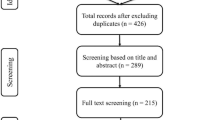Abstract
A field experiment was conducted to study the effect of vegetation cover on soil spectra and relationship of spectral indices with vegetation cover. Multi-date spectral measurements were carried out on twelve wheat fields. Five sets of measurements were taken during the growth period of wheat crop. Field reflectance data were collected in the range 350 to 1800 nm using ASD spectroradiometer. Analysis of data was done to select narrow spectral bands for estimation of ground cover. The ratio of reflectance from vegetation covered soil and reflectance from bare soil indicated that spectral reflectance at 670 and 710 nm are the most sensitive bands. Two bands in visible (670 and 560 nm), three bands in near infrared (710, 870 and 1100 nm) and three bands in middle infrared (1480, 1700 and 1800 nm) were found highly correlated with fractional cover. Vegetation indices developed using narrow band spectral data have been found to be better than those developed using broad- band data for estimation of ground cover.
Similar content being viewed by others
References
Aase, J.K. and Tanaka, D.L. (1983). Effect of tillage practices on soil and wheat spectral reflectance.J. Agron.,76(5): 814–818.
Ben-Dor, E. and Banin, A. (1995). Near infrared analysis (NIRA) as a rapid method to simultaneously evaluate several soil properties.Soil. Sci. Soc. Am. J.,59(3): 364–372.
Cloutis, E.A. (1996). Hyperspectral geological remote sensing evaluation of analytical techniques.Int. J. Remote Sens.,17(12): 2215–2242.
Huete, A.R. (1988). A soil adjusted vegetation index (SAVI).Remote Sensing Environ.,25(3): 295–309.
Kruse, F.A., Kiereinyoung, K.S. and Boardman, S. (1990). Mineral mapping at Cuprite, Newada with a 63-channelimaging spectrometer.Photogrm. Eng. Remote Sens.,56(1): 83–92.
Liang, S. and Townshend, R.G. (1996). A modified Hapke model for soil bi-directional reflectance.Remote Sens. Environ.,55(1): 1–10.
Murphy, R.J. and Wadge, G. (1994). The effect of vegetation on the ability to map soils using imaging specrometer data.Int. J. Remote Sensing,15(1): 63- 86.
Palacios-Orueta, A., Pinzon, J.E., Ustin, S.L. and Roberts, D.A. (1999). Remote sensing of soils in the Santa Monica mountains: I. Hierarchical foreground and background analysis.Remote Sensing Environ.,68(2): 135–151.
Palacios-Orueta, A. and Ustin, S.L. (1996). Multivariate classification of soil spectra.Remote Sens. Environ.,57(2): 108–118.
Patel, N.K., Ajay, Shiwalkar, Saxena, R.K., Srivastava, Rajeev and Verma, K.S. (2002). Database for development of spectral reflectance library of soils. Scientific note, SAC/RESA/ARG/TSDD/SN/02/ 2002, Space Applications Centre, Ahmedabad.
Author information
Authors and Affiliations
Corresponding author
About this article
Cite this article
Patel, N.K., Saxena, R.K. & Shiwalkar, A. Study of fractional vegetation cover using high spectral resolution data. J Indian Soc Remote Sens 35, 73–79 (2007). https://doi.org/10.1007/BF02991835
Received:
Revised:
Issue Date:
DOI: https://doi.org/10.1007/BF02991835




